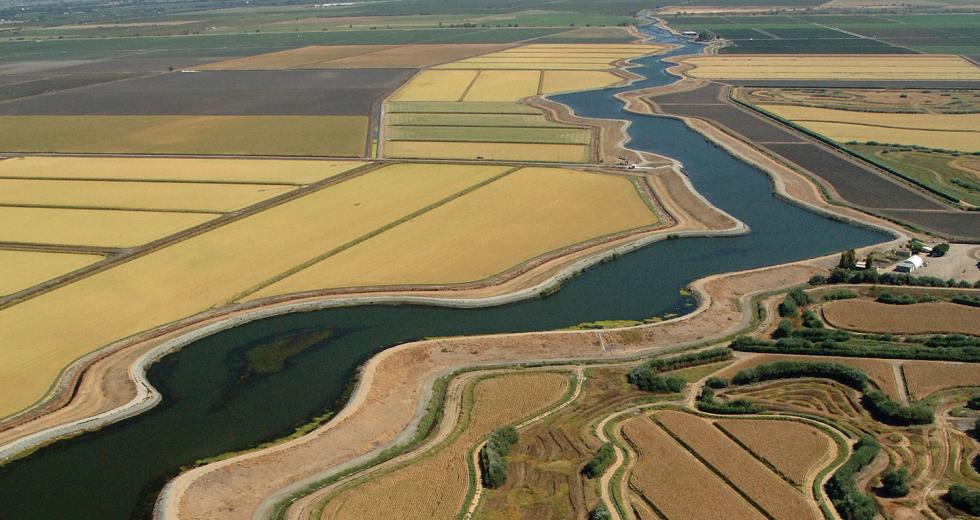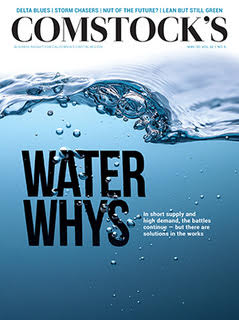The state had been wrestling with the problem for 15 years, and there were hopes it was about to get pinned to the mat. A decade and a half of meetings, lawyerly and political negotiations, and massive public input had led the State Water Resources Control Board to the brink of a momentous decision: California must leave a lot more water in its rivers and streams in order to save the Sacramento-San Joaquin Delta and San Francisco Bay.
Steve Rothert, California director of the nonprofit American Rivers, has spent the past five years working on the issue and says board action was urgent. “Most scientists would agree that nearly all the key indices of ecosystem and native fishery health are in decline — in many cases, at catastrophic levels,” he says. “And there are 8,000 water-rights holders, a $47 billion per year agricultural industry, and 25 million people who rely on water that flows into and through the Delta.”
“Most scientists would agree that nearly all the key indices of ecosystem and native fishery health are in decline — in many cases at catastrophic levels. And there are 8,000 water-rights holders, a $47 billion per year agricultural industry, and 25 million people who rely on water that flows into and through the Delta.”
STEVE ROTHERT CALIFORNIA DIRECTOR, AMERICAN RIVERS
On Nov. 8, 2018, representatives of constituencies who’ve been engaged in the fight over Delta water for years — in some cases decades — gathered in the main conference room of the California Environmental Protection Agency headquarters in Sacramento. The board was scheduled to vote on an update to the Bay-Delta Water Quality Control Plan, something that is supposed to happen every three years but has not been done since 2004. The proposed update decreed that the tributaries that feed the San Joaquin River maintain up to 50 percent “unimpeded flow.”
In some years, that would mean state and federal dam operators on the Stanislaus, Tuolumne and Merced rivers would be required to release as much as 30 percent more water than currently mandated. Instead of being stored in reservoirs for future use by farms and cities, that water would go back into the rivers for the purpose of protecting fisheries. A related process dealing with the Sacramento River Basin had yet to get underway.
The meeting had been moved into the main conference room to accommodate hundreds of stakeholders, nearly every one of whom saw the vote as a matter of life or death — of the king salmon, the Delta, their industry, their farm community. On the eve of the historic meeting, however, a curveball had arrived in the form of a letter, signed by Gov. Jerry Brown and the incoming governor, Gavin Newsom, asking the board to postpone its vote.
The letter said state agencies, water districts and others involved in a process Brown had instituted early in his administration — a framework of “voluntary agreements” — were close to a deal. Brown believed these voluntary agreements were necessary, since regulation would result in endless lawsuits.
Allowing the negotiations to progress without a vote to strictly regulate surface-water usage “would result in a faster, less contentious and more durable outcome,” the letter stated. During the month’s pause the lawmakers requested, the letter concluded, “we pledge to actively and meaningfully engage to bring this final matter to successful closure.”
The following morning, the board received an unscheduled visit from Chuck Bonham, director of the California Department of Fish and Wildlife, and Karla Nemeth, director of the California Department of Water Resources. Both pleaded with the board to give them the month to complete the voluntary agreement process they and their teams had been working on for years. After seven hours of public testimony, the board agreed.
Thirty-four days later, on Dec. 12, 2018, the board reconvened, and virtually everyone who had been at the November meeting was present — with the exception of Bonham and Nemeth. No one in the room was surprised that a problem that had been intractable for years was not solved in a month.
Over the next six hours, a parade of witnesses — suited lawyers, fleece-clad environmentalists, fishermen and farmers in jeans and flannel — walked up to the microphone to take three minutes to make their case one more time.
The board discussed the matter for another half hour. Water Board chair Felicia Marcus, after decrying the “warring narrative” that had marked the process, indicated she would cast a yes vote in favor of the Bay-Delta Water Quality Control Plan update. “It’s time for the talkers to get out of the way of the people on the ground,” she said in closing.
And then, in apparent defiance of the current governor and incoming governor, the board voted 4-1 to take action. For the first time, water users in the state of California would be forced to share a meaningful portion with the creatures that inhabit its waterways.
Within weeks, as predicted, the state was sued by attorneys representing the agriculture industry, municipalities including the City of San Francisco and several environmental groups. Consequently, there has been no move to enforce the standards that the board had mandated. On the ground, it’s almost as though the historic vote had never happened.
Fish out of Water?
California’s great rivers, the Sacramento, San Joaquin and American, are not rivers in the original sense of the word. Their flow is artificially controlled through one of the world’s most extensive series of dams, reservoirs and canals. From the moment they arrive in the Central Valley, all three flow through channels cut by the Army Corps of Engineers.
If not for all of this plumbing, these rivers would be broadly meandering streams and marshlands in winter and spring, and trickling creeks most summers. Instead, they resemble large canals flowing through what had been their main channels — although they have resurrected some of their wildness over the decades. This vast system of damming and channeling, for flood control and irrigation, is the foundation upon which Californian civilization is built.
This massive triumph of science and engineering, which helped build the world’s fifth largest economy, also wiped out 95 percent of the riparian habitat California’s native wildlife relied on for survival, according to the UC Davis Center for Watershed Sciences. Now, the Sacramento-San Joaquin Delta — the largest estuary on the West Coast — is in ecological crisis. According to many studies, including one by the American Fisheries Society, the Delta’s once-abundant fishery is in the midst of a decades-long collapse.
A 2008 Center for Watershed Sciences study showed that the iconic chinook salmon was teetering on the edge of extinction, and the steelhead trout was in danger of vanishing from the state’s rivers and streams. Recent studies show the dire situation in the Delta has gotten worse. As a result, California’s once-thriving fishing industry has been in steep decline. And now, folks on both sides of the fish-versus-farms fight are hoping a bold new scientific and engineering effort similar to the state’s great water projects can undo the damage.
For decades, the California water debate revolved around one metric: unimpeded flow, which is the amount of water in the river and streams. The fish-versus-farms fight is a conflict over that one commodity, with the advocates for the fish arguing that the state’s agriculture industry is largely responsible for a coming extinction. At the Water Board meetings in 2018, countless conservationists attacked the very idea of sending this scarce resource to the southern San Joaquin Valley so farmers could grow crops for the global market.
While flow is still without doubt the key issue, it is no longer the only one. When the Water Board voted to regulate and restrict water use by farms and cities, it also directed staff to continue the voluntary agreements discussion, which brings other considerations to the table. This includes $2.8 billion for habitat restoration, science and adaptive management, and another $2.2 billion for further environmental improvements, according to the voluntary agreements framework.
Kevin O’Brien, a partner at the Sacramento law firm Downey Brand who has litigated water cases and represented water users before the board for 35 years, says expanding the scope of the argument to include factors other than unimpeded flow is the key to its resolution. He applauds Newsom for his “willingness to find a middle path based on sound science.”
“We can’t solve the fish problem by throwing water at it,” he says. “Flow is important, but not as important as habitat restoration and getting these fish ready for the ocean.”
Kim Delfino, the California program director of Defenders of Wildlife, who has worked on Delta issues from the other side of the bargaining table from O’Brien for 15 years, does not disagree. “It’s not as simple as, ‘Let’s just cut agriculture off and retire a bunch of farmland,’” she says. “There may be points in time when it’s appropriate to take large amounts of water and move it south. But there are also times where it’s not appropriate. Mother Nature is more complicated than we knew.”
“It’s not as simple as ‘Let’s just cut agriculture off and retire a bunch of farmland.’ There may be points in time when it’s appropriate to take large amounts of water and move it south. But there are also times where it’s not appropriate. Mother nature is more complicated than we knew.” KIM DELFINO CALIFORNIA PROGRAM DIRECTOR, DEFENDERS OF WILDLIFE
The framework of voluntary agreements — the version the Brown administration oversaw as well as the version released in February by Newsom’s team — addresses habitat restoration as well as science and adaptive management. It proposes to restore 60,000-plus acres of new habitat, including large-scale restoration in the Sacramento Valley, and creates a “collaborative science hub” to study restoration of the fishery and climate change adaptation.
The wetlands, riparian forests and free-flowing streams that once supported the fishery that included millions of salmon are now mostly farms. Conservation groups, including California Trout and the Audubon California, are working with farmers to create or re-create some of the habitat that has been lost.
Meghan Hertel, director of land and water conservation at Audubon California, oversees that organization’s Working Lands Program. She says rice farms throughout the Sacramento Valley and northern San Joaquin County have become “surrogate habitat” for the millions of birds that migrate along the Pacific Flyway. She and others are hoping to replicate that success story for fish.
The story begins with a happy tale of unintended consequences. In the 1990s, the California Air Resources Board forced rice farmers throughout the state to cease burning their fields at the end of the growing season — a practice that got rid of unwanted straw but clogged Central Valley skies with pollution. The farmers began flooding their fields instead, and they started noticing birds returning by the thousands, and then by the millions.
The Sacramento-San Joaquin Delta is in ecological crisis,
according to the American Fisheries Society and other
environmental groups. (Photo by Kelly M. Grow/California
Department of Water Resources)
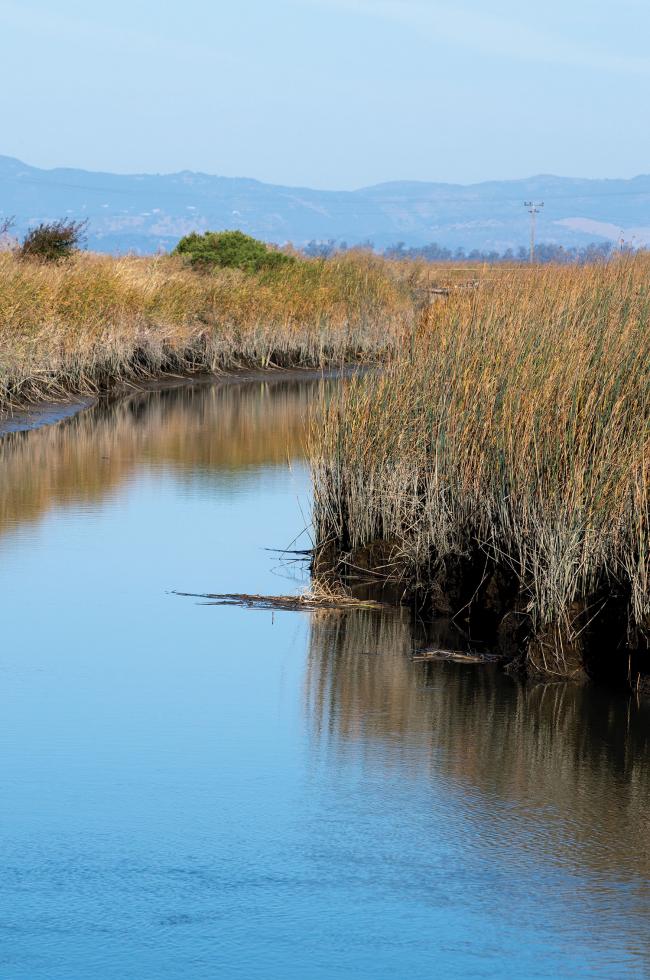
“When those rice growers started to flood their fields,” Hertel says, “it mimicked and replicated much of the wetlands that had been lost. It created surrogate habitat. And the waterfowl responded very, very quickly.”
Audubon members had also noticed the rebirth of the migratory bird route known as the Pacific Flyway, which stretches from Alaska to Patagonia. Audubon started meeting with rice growers and the California Rice Commission. They explained that different species require different depths of water on the landscape at different times of year, and the growers developed new management practices. Audubon was able to get language in the Farm Bill to put up half the money for the program, and the farms covered the rest. Over the past 10 years, $23 million has been spent, and almost 500,000 acres of habitat has been created for shorebirds.
California Trout is now at work on a very similar program for salmon and trout. Again working with rice farmers, the organization is flooding fields to create surrogate habitat. Hertel says the effort is likely to succeed. “Birds and fish evolved at the same time in the Valley, so, in theory, they should need the same types of things at the same time.”
In ecosystem management, timing is everything. Just as sandhill cranes need a certain depth of water when they arrive in the fields near the confluence of the Cosumnes and San Joaquin rivers in the fall and different depths later in the year, chinook have specific needs that vary from season to season and month to month. The life cycle of the California chinook — which are born in mountain streams and spend 2-6 years at sea before returning to their spawning grounds — is complex, and the two chinook runs each year in the Sacramento River Basin require specific conditions at different times.
At the Water Board meetings in late 2018, it was clear that it is not just fishermen and environmentalists working to figure out the science and technology that can restore the once-great fishery. Many municipal water districts up and down the state, as well as farmers big and small, appear to have decided it is in their best interest to save the Delta too. Stakeholders working within the voluntary agreements framework are hoping interventions such as habitat restoration projects will take pressure off threatened fish populations — and decrease the need for severe water restrictions.
Fish on Rice
Roger Cornwell, manager of River Garden Farms in Knights Ferry, stands on a levee in early March surveying 120 acres of flooded fields that were recently home to thousands of salmon small fry. Cornwell, who has partnered seven years with Audubon California, is working on the Nigiri Project, a collaboration of the UC Davis Center for Watershed Sciences, the California Department of Water Resources and California Trout, and named for the Japanese fish-on-rice delicacy. This scenario, involving a large agricultural operator, a major conservation group and state agencies, is precisely the kind of thing Gov. Newsom is hoping will result from the voluntary agreements process.
The Nigiri Project reimagines California’s rice farms as de facto refuges, where fish can feed, just as their ancestors fed in the floodplains and wetlands that were here before the land was given over to agriculture. Cornwell built the levee he’s standing on, which encloses a pond that a week earlier contained fish in pens and some free-swimmers. In a dozen or so fish baskets, the small fry fattened up on what Cornwell calls “zoop” — zooplankton — which, in turn, feed off rice stalks. Another 50 or so now-empty baskets line an irrigation canal that runs alongside the flooded field. The fish that lived in those baskets are on their way to the ocean.
Roger Cornwell, manager of River Garden Farms in Knights Landing,
uses zooplankton to fatten the thousands of salmon small fry that
lived for six weeks in his 120 acres of flooded fields. (Photo by
Rob McAllister/Franklin Pictures)
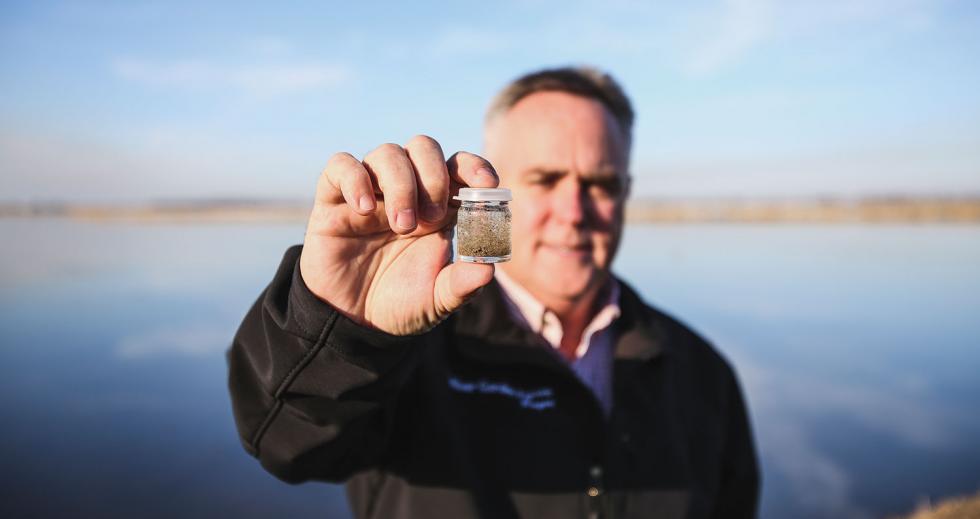
When they were introduced to the pond, they were about a quarter-inch long, “just out of the gravel,” he says. Six weeks later, when they were pulled, they were 3 inches. Studies show that fish in the Sacramento River show nothing like that kind of growth over the same period of time.
If the Nigiri Project experiment at River Garden Farms proves as successful as it promises to be, farms with access to the nearby Tule Canal will be able to fatten up juvenile fish and release them into the canal, which empties into the Yolo Bypass under the causeway between Sacramento and Davis. River Garden doesn’t have access to that canal, and the U.S. does not yet have the pump technology that would allow Cornwell to pipe the fish to the river, a few hundred yards away. That’s why he is hosting another experiment that would allow him to get food to the fish.
A couple miles from the Nigiri Project site, Cornwell pulls his pickup truck onto another levee to check out another flooded field. This one, within view of the big River Garden farmhouse that has stood here since 1915, consists of nine ponds of three sizes. California Trout is using the ponds to measure how long its biologists need to leave water on the ground to produce optimal bug density. The ponds are filled and drained at various intervals, and the California Trout scientists measure zooplankton, phytoplankton, planktonic crustaceans and other critters.
“This is fish food,” Cornwell says. “We are reactivating the floodplain.” He foresees pumping the “zoop soup” into the river that runs along 15 miles of his 15,000-acre farm. “This whole section of the river is a food desert,” he says, explaining his hope that rice farmers in the Central Valley might help bring California’s rivers back to life. “In my opinion, this is reconciliation ecology.”
Up and down the state, similar initiatives are poised to launch — if and when Newsom’s voluntary agreements framework yields results, pumping millions of dollars into the nascent fish-technology ecosystem.
Whiskey’s for Drinking, Water’s for Compromising
A couple weeks after his inauguration in January 2019, Gov. Newsom removed Felicia Marcus as Water Board chair and replaced her with Joaquin Esquivel. Although the move was seen as a kind of course correction, Esquivel, a board member since 2017, had voted with Marcus and the 4-1 majority to send more water to the environment.
The voluntary agreements process continued with increased vigor, according to all reports, under new Natural Resources Secretary Wade Crowfoot and new CalEPA chief Jared Blumenfeld. Until they fell apart.
On Feb. 19, President Donald Trump traveled to Bakersfield to tell cheering supporters he was delivering on a campaign promise. Days earlier, his administration’s Bureau of Reclamation changed its rules, sending more water to farmers in the southern San Joaquin Valley — in direct opposition to California’s initiative. Newsom responded with a lawsuit, and the voluntary agreements process that had proceeded through 2019 and into 2020 stalled immediately.
Gary Bobker, director of The Bay Institute, has mixed feelings about the process being at least temporarily abandoned. Bobker, who has been involved in California water politics for more than 30 years, is among the many environmentalists who would prefer the Water Board simply enforce the standards it established in 2018.
“The authority the board has, under the federal and state Clean Water Acts, is the strongest and most far-reaching tool the state has to govern this vast ecosystem,” he says, admonishing the Water Board for “elevating the voluntary agreements process over discharging its regulatory responsibilities.”
The Bay Institute was one of a handful of conservation groups, including American Rivers, invited to participate in the voluntary agreements process. Bobker says he had a bit of hope at the outset but less as the year proceeded.
Biologists Miranda Tilcock and Veronica Corbett study chinook
salmon raised in pens for the Nigiri Project, a collaboration of
the UC Davis Center for Watershed Sciences, the California
Department of Water Resources and California Trout. (Photo by
Jacob Katz)
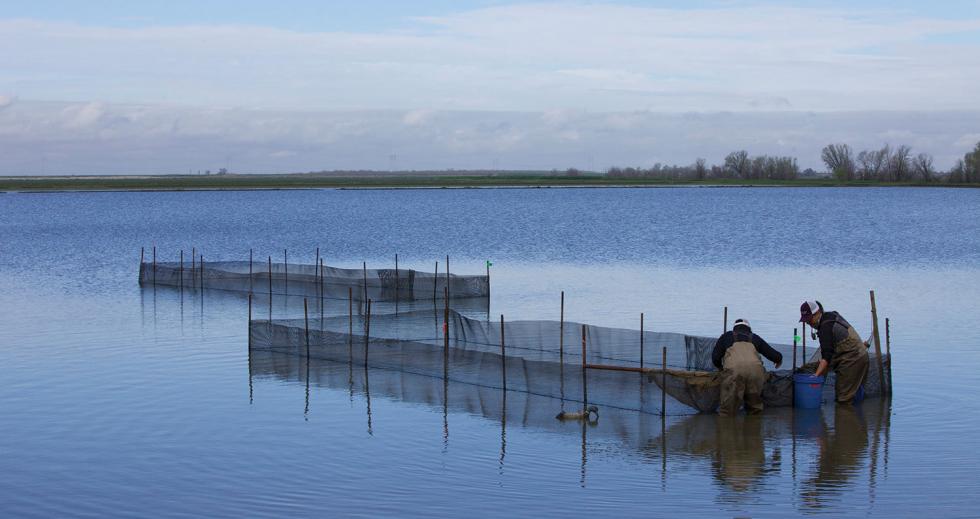
Nevertheless, he is supportive of the environmental restoration projects in the voluntary agreements framework. “It isn’t an either-or question,” he says. “To save the Delta’s ecosystem, we need to systematically look at how we can better manage water supplies, we need to restore more habitat — and we need to send more water to and through the Delta.”
To support that last claim, he points to a 2010 study conducted by the Water Board itself, which showed that when considering the health of the fishery in isolation, without balancing that need against other “beneficial uses” such as agriculture, the Delta would require instream flow be increased by far more than the Water Board’s 2018 mandate.
American Rivers’ Steve Rothert still champions the stalled voluntary agreements process. “I had a lot of hope for the new path that it could create and the benefits that could come from working together with more resources,” he says. “I look forward to integrating the financial resources to fund science and habitat, and flow measures to restore conditions.”
He admits nothing will happen with that process until November at the soonest, since water contractors in the southern San Joaquin Valley, with a powerful ally in the White House, have no reason to consider compromise. But he’s certain the conciliatory spirit is not dead. Meanwhile, restoration initiatives like the Nigiri Project continue.
Hertel says she sees folks on both sides talking past each other when the solution is clearly somewhere in the middle.
“I think environmentalists have lost so much that we feel like we’re starting from almost zero,” she says, “and so compromising feels like you’re letting go of the last threads you’ve got to hold on to. My hope is that we can put down the labels long enough to try to find solutions together. One thing this COVID-19 crisis has taught me is that a true emergency can bring people together.”
—
Stay up to date on business in the Capital Region: Subscribe to the Comstock’s newsletter today.
Recommended For You
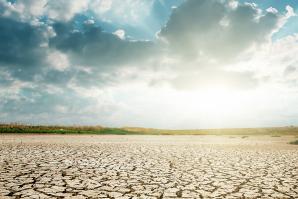
Are We Doomed by Climate Change?
Fast-thinking innovation is needed to prevent ‘wetter wets, drier dries, hotter hots’ from threatening the state’s crops, species and economy
Mediterranean climates, like California’s, typically follow boom and bust cycles, marked by a predictable shift between cold and wet and hot and dry. But the changing climate will amplify that pattern with weather that is, at times, wetter and at other times hotter.
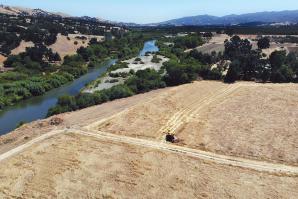
Shouldering the Burden
Progressive-minded farmers in the Capital Region undertake steps to battle and adapt to climate change
A growing movement of farmers is focused on agricultural practices that can mitigate or adapt to an uncertain future brought by climate change.
Part of this month’s Innovation issue
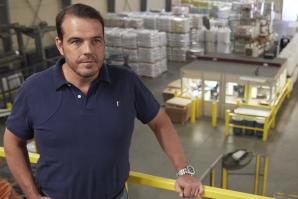
The Growth of Rice
A recent deal to export to China is expected to further expand the market for the popular grain
Half of the rice grown in California goes to the U.S. and Canada; the other half is exported to Japan and 30 other countries, including South Korea, Taiwan and Jordan. Now China, the largest consumer of rice in the world, joins that group.
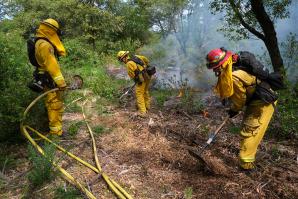
Beating the Burn
California’s plan to deal with deadly and devastating wildfires — including controlled burns, thinning and a restoration economy — is ambitious; is the state up to the task?
Past approaches to forest fires have been a misinformed regime of fire suppression: extinguishing all flames quickly. Now California’s forests are overgrown tinderboxes-in-waiting; the approach is changing, but there’s a lot of work to do.



